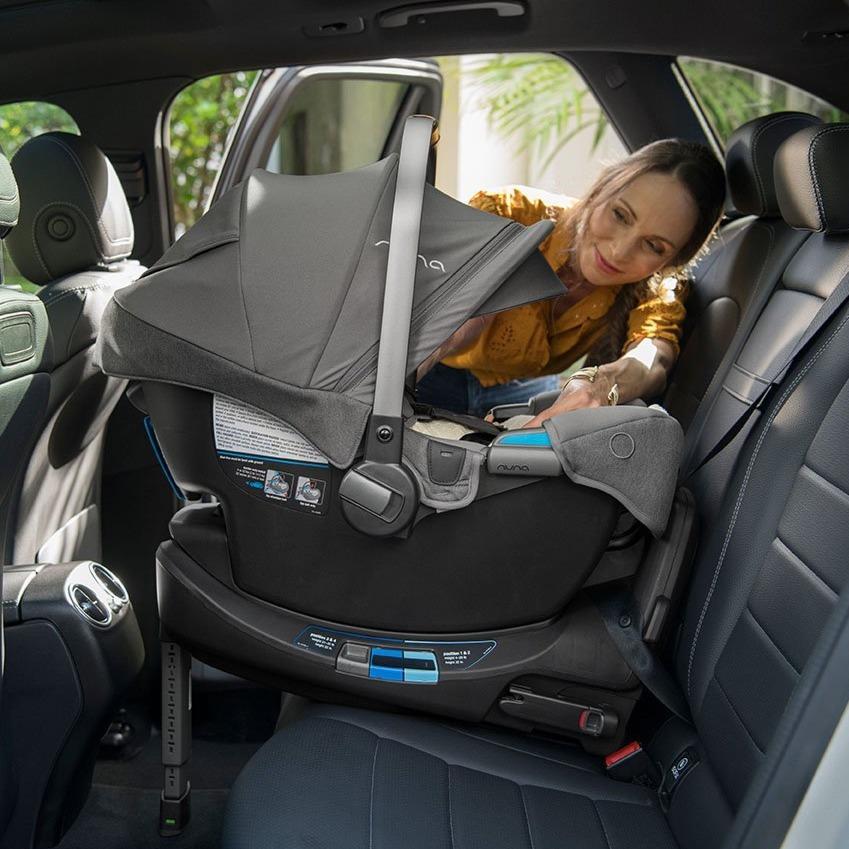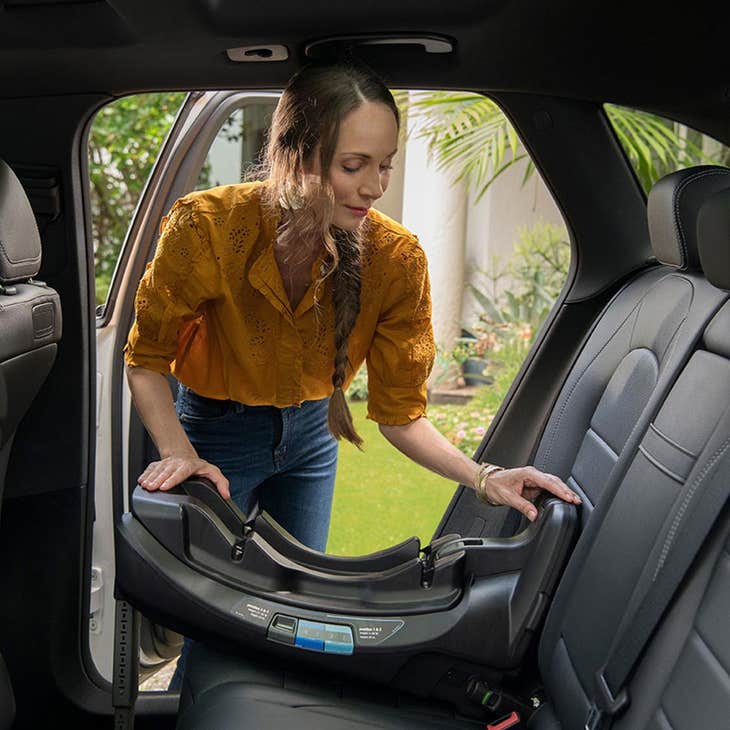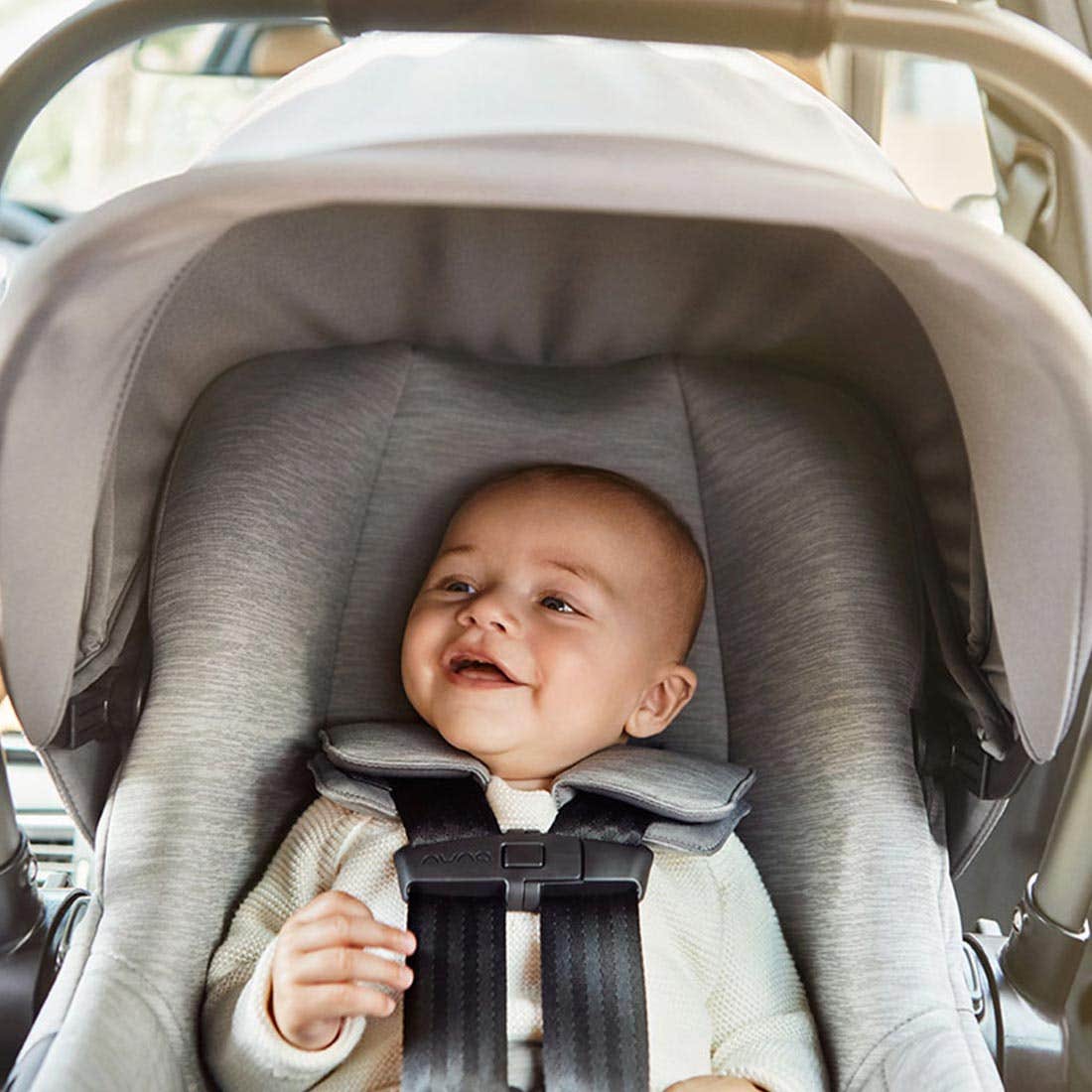Installing a car seat properly gets a lot of attention for good reason. According to the National Highway Traffic Safety Administration (NHTSA), while most parents and caregivers are confident that they have correctly installed their child’s car seat, almost half (46%) have been installed incorrectly. The good news is that installing a car seat properly has serious benefits: The American Academy of Pediatrics (AAP) reports that “using the correct car safety seat or booster seat can help decrease the risk of death or serious injury by over 70%.”
Let’s look at four best practices that can help any parent correctly install every car seat, every time.

Photo courtesy of Nuna.
1. Establish a tight connection. No matter which type of car seat you’re installing, the key to a safe install is a tight connection between your car seat and your vehicle's seat back.
There are two main methods of installing a car seat: the LATCH system (Lower Anchors and Tethers for Children) and via vehicle seat belt (lap and shoulder belt or lap belt only). The LATCH system was developed to make it easier to install child seats safely without having to use seat belts, which can complicate the install. Check your vehicle’s owner’s manual to see if your car includes the LATCH system, which is common in newer cars.
A rule of thumb for any installation method, and any type of car seat, is that the car seat should be tightly anchored in the vehicle seat crease and should move no more than one inch sideways when shaken at the belt path. Instructions for each method of installation and each car seat, however, will vary. Always consult your vehicle owner's manual as well as your car seat instruction manual before securing your car seat and going for the first ride.
Always ask for professional help if you cannot get a secure, tight install after following all the instructions in the manual. Many manufacturers have tips for troubleshooting installation problems that are not in the manual. Checking your manufacturer’s website is a great place to start.
If you’re struggling to install your car seat correctly, check with a Certified Passenger Safety Technician (CPST) or another trained professional near you. At Tadpole, for example, our certified technicians have been working with new parents before and during the COVID-19 pandemic to provide families with car seat demos (virtually or in-person) and to offer properly masked car seat fittings and installs.
 Photo courtesy of Nuna.
Photo courtesy of Nuna.
2. Secure your child in the harness. The second most important step in correct car seat installation is securing your child properly within the car seat's harness.
Tighten the harness across your child's body so that there is no extra slack to pinch in the harness webbing at the shoulders. Shoulder pads that usually velcro over the harness straps should be on top of your little one's shoulders, this also helps protect the skin on the neck from getting pinched when straps are tightened. The chest clip should be at armpit level, which is the strongest part of a young child's body.
If your child is rear facing, make sure to position the harness at or slightly below their shoulders. A rear-facing child is likely to slide up in their seat in a crash, so the shoulder straps should start at or slightly below the child's shoulders to prevent the child from sliding up too much.
Once you switch to forward-facing mode, position your harness straps at or slightly above the child's shoulders to prevent the forward-facing child from slouching too much under the harness straps in case of a car crash.
 Photo courtesy of Nuna.
Photo courtesy of Nuna.
3. Don’t forget the top tether. Using the top tether is crucial, specifically for forward-facing car seats.
The top tether is a strap that stretches from the back of your car seat through and over the vehicle seat's headrest and hooks in the back of your trunk to your car seat's tether anchor. This feature limits forward motion of the car seat — and your child — helping reduce potential injury in a case of an impact.
4. Adjust your car seat correctly. Last but not least, familiarize yourself and/or your caregiver about the proper use and adjustment techniques for your particular car seat. As the baby grows, all car seats must undergo certain adjustments to get the growing child re-positioned properly so the seat can protect them in the most efficient way.
• The first adjustment involves the infant insert. If you've been using a car seat with an insert, you will have to take it out after your baby reaches a certain weight limit as specified by the car seat manufacturer. This step is required so the harness straps can fit properly over your growing child. It may appear that your child is getting too big for the car seat, but in fact the insert is making your harness feel tighter than it should be.
• One of the most important car seat adjustments comes next: the headrest and shoulder harness adjustment. You should always have your child’s ears within the car seat's headrest area. That means you will have to adjust it upwards as your child gets taller. As they grow, your child's shoulders will also be at a higher level, so you will need to adjust the shoulder straps to be at or slightly below the child's shoulders for the rear facing position and at or slightly above the shoulders for the forward facing position.
There are two ways of adjusting your car seat's harness: manually, or the rethread method, or an easier, button activated method that does not require rethreading the harness. The latter method usually involves adjusting the harness straps via pulling the headrest to a higher position. Always refer to your car seat's manual for specific adjustment instructions for your car seat model.
• The third (and often overlooked) adjustment is the crotch buckle position. You don't want
to have too much space between the child and the crotch buckle because it will make them slouch. You also don't want the child to be sitting too tightly, i.e. straight on the buckle, since that will make them uncomfortable.
Some car seats will have two buckle positions to allow for more comfort as the child gets bigger. If your car seat has two positions, you should always use the crotch position that is closest to the child's body. This will typically be the first, most inward position for smaller babies. You will switch to the second, most outward position as the baby grows.
• Last but not least, if your car seat is installed with the LATCH system, make sure you follow the LATCH weight limits of your particular car seat, which can vary. Additionally, always follow the weight and height limits for the riding position you are in. Remember that the American Academy of Pediatrics strongly encourages using rear-facing car seats for as long as possible, until a child reaches the highest weight or height allowed by the manufacturer. For most manufacturers, that limit is typically passed by the age of two.
Choosing and installing the right car seat for your family can help keep your child(ren) safe for years to come. Still deciding on the right car seat for you? Read Part One of our Car Seat Safety series, How to Choose the Right Type of Car Seat for Your Family. If you have specific questions about car seat selection or installation, you can also reach out to our technicians at Tadpole. It's our mission to help parents make informed decisions about the best ride for their family and keep their children riding safely.
About the Author
Tadpole aggregates best baby and children’s products ranging from small, mom & pop brands to larger companies that have all proven the ability to make high-quality, environmentally safe and user friendly products. We help parents discover and fall in love with new brands that are committed to child safety ranging from your baby’s first outfit to their first car seat to a scooter. We‘ve watched so many little ones grow up in front of our eyes over the years and we’re super excited to take part in your life as a resource for all things baby and further.




